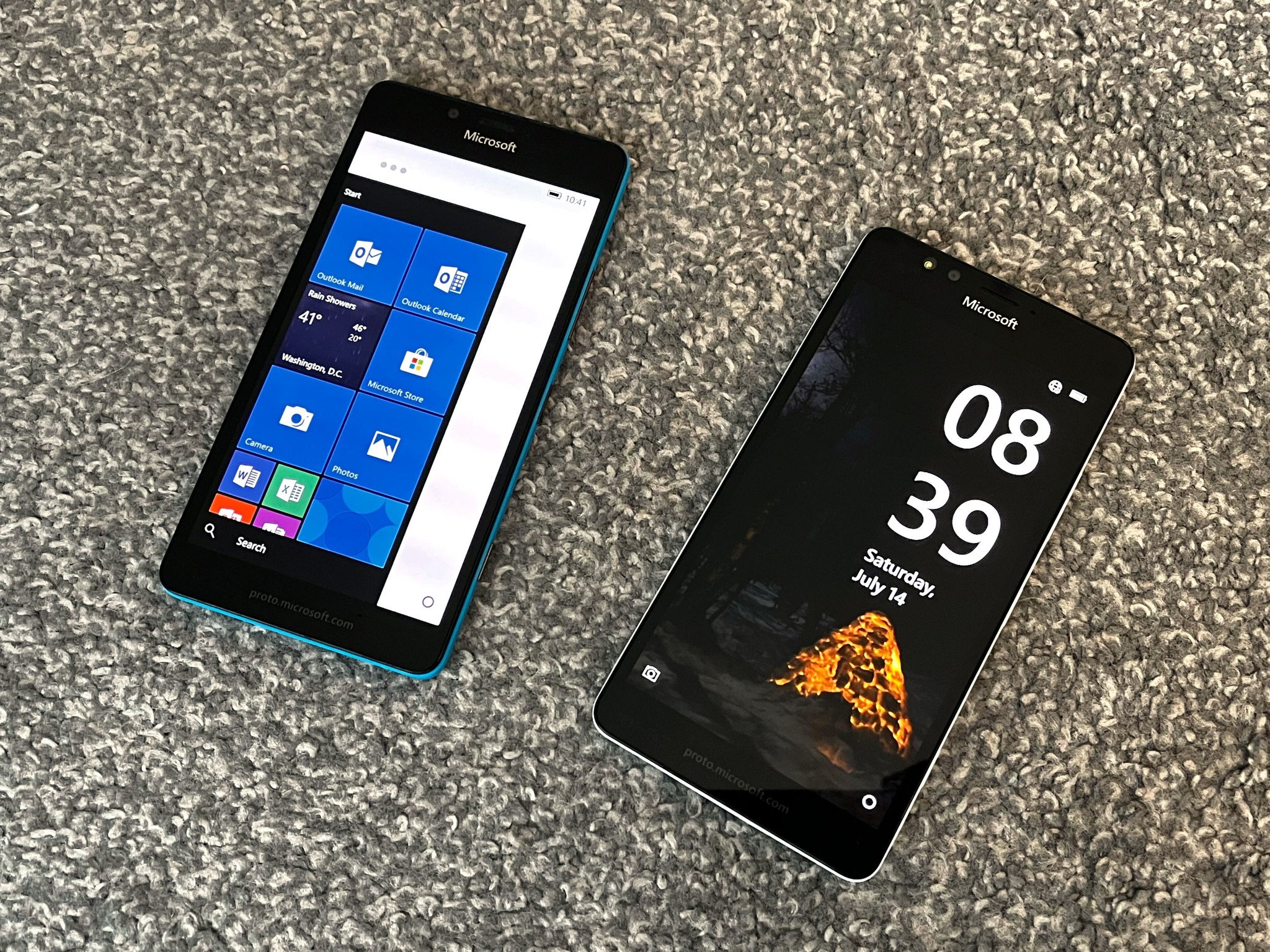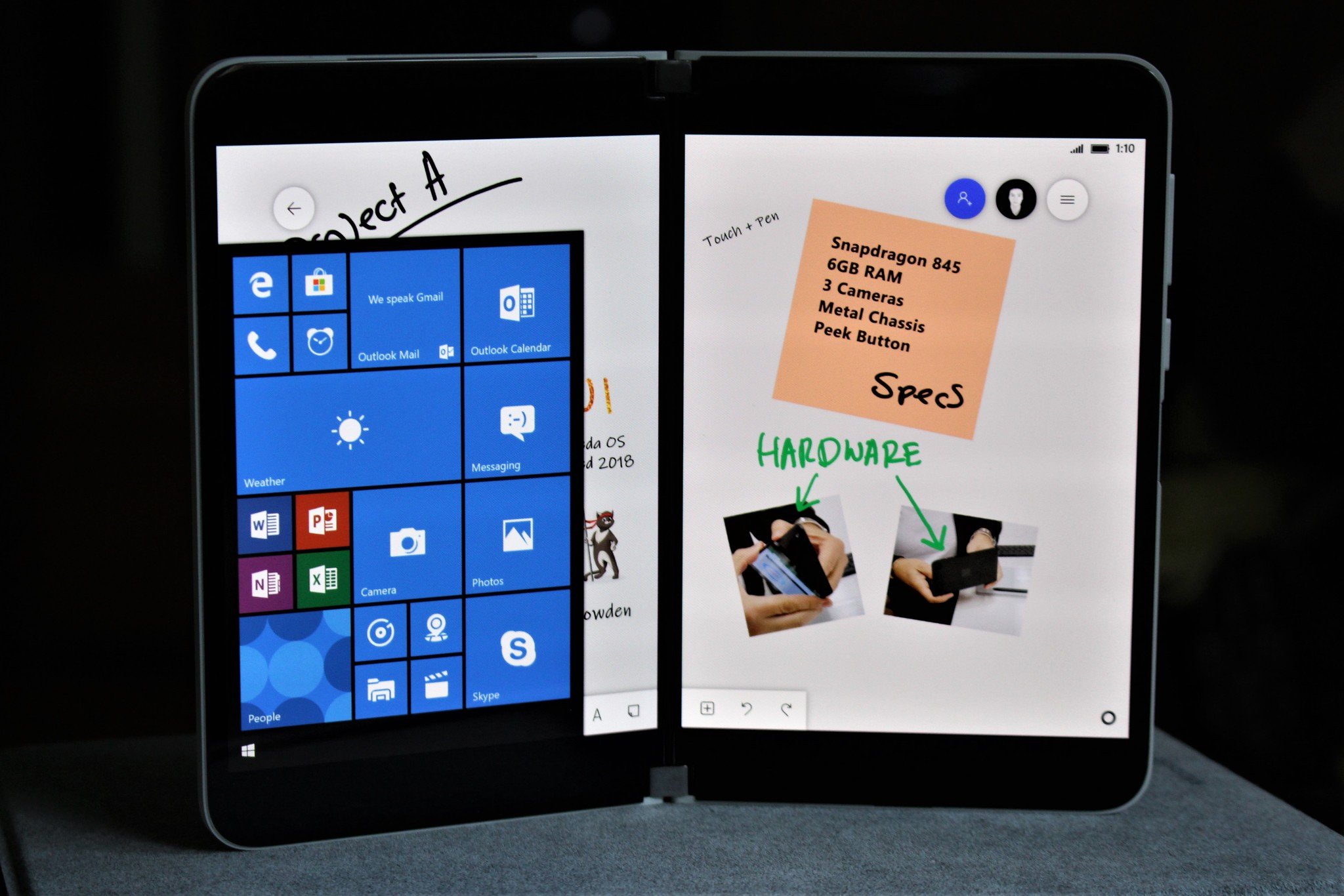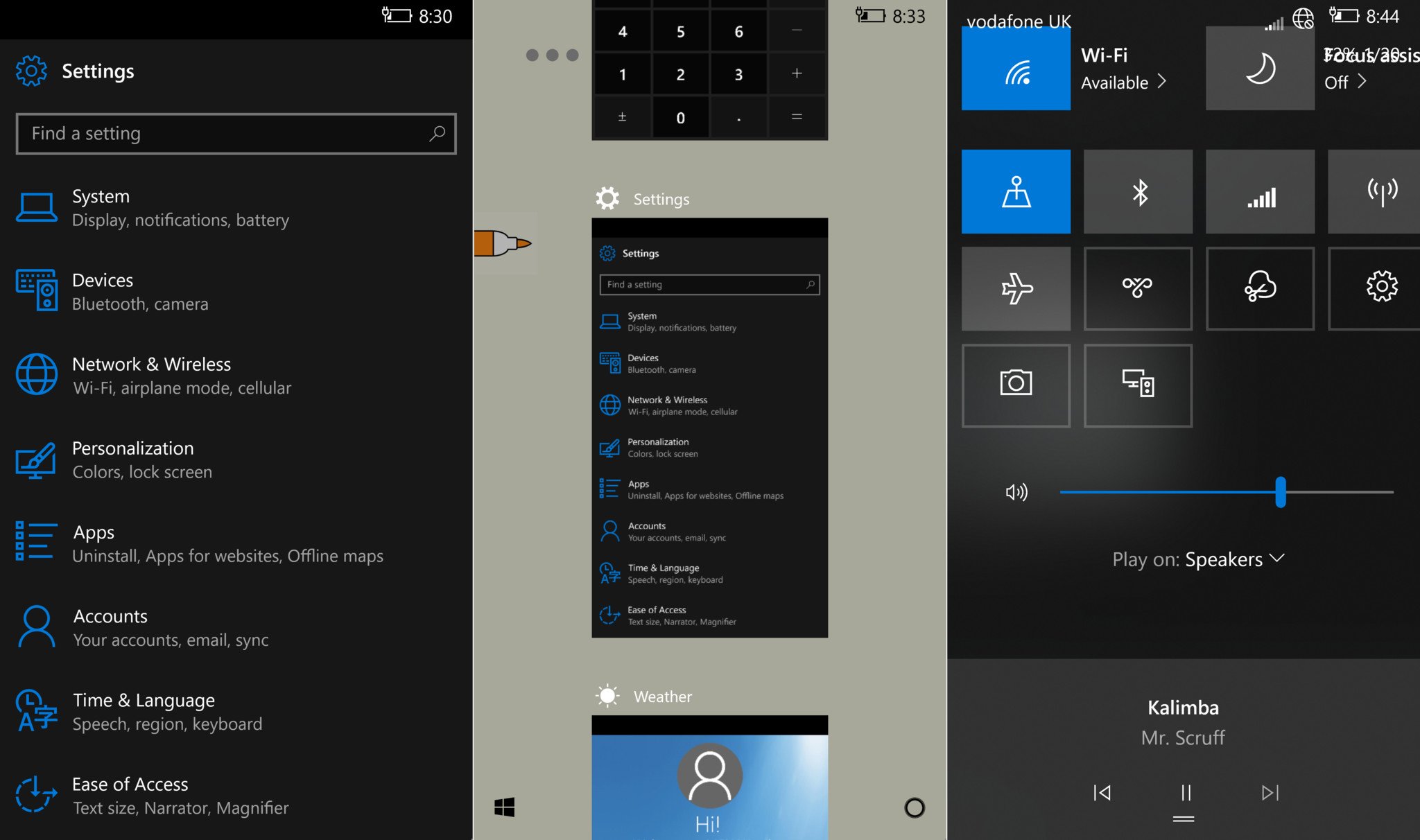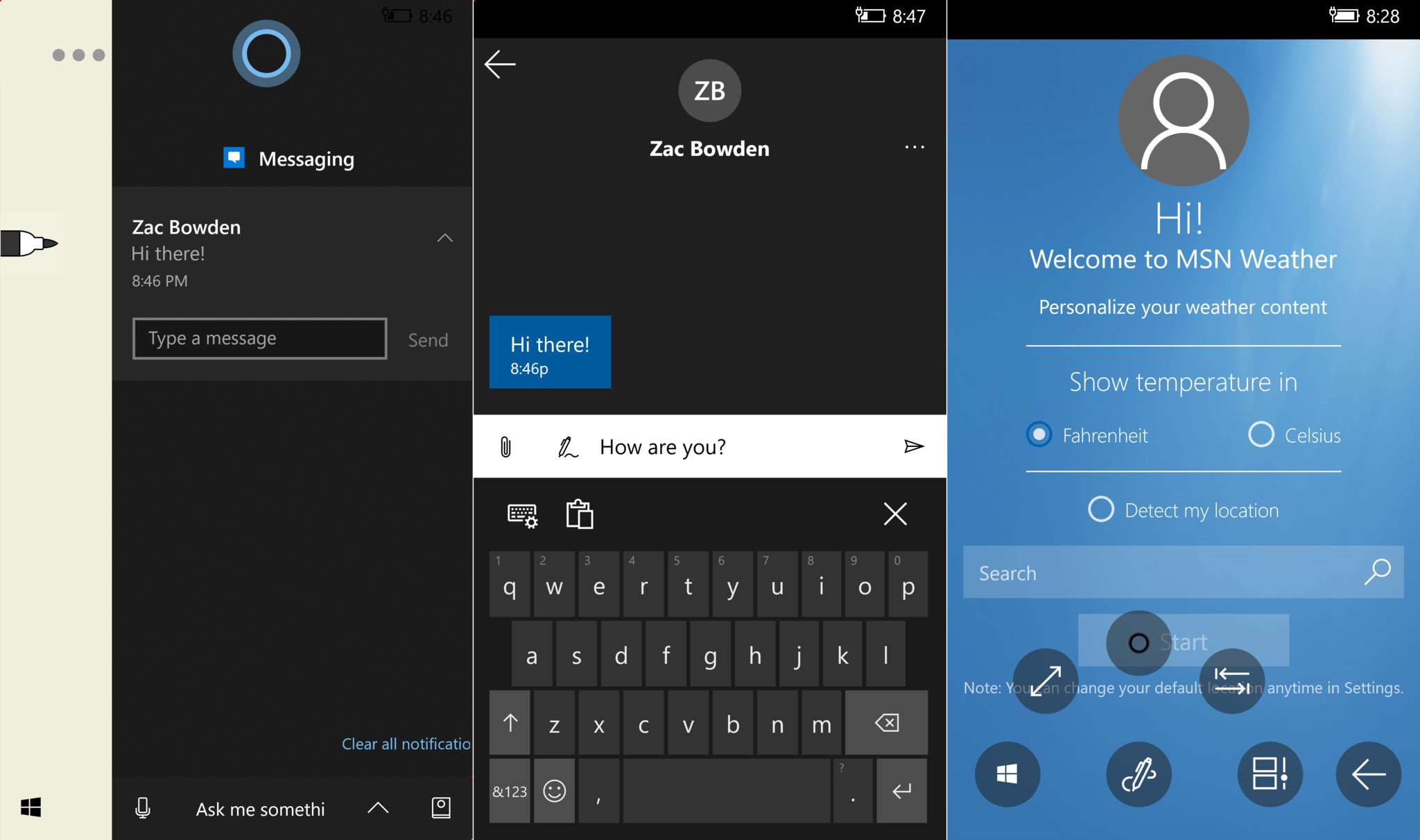This is Microsoft's canceled Andromeda OS running on a Lumia 950
We take a look at Microsoft's canceled Andromeda OS project.

Ever wondered what Microsoft's canceled version of Windows for the Surface Duo was going to be like? Well wonder no more, as we've got a first hands-on look at a pre-release build from mid-2018 running on a Lumia 950. We've already shown you what Andromeda OS looked like in recreated mockups, so now it's time to see the real thing running on video.
Before we begin, I should make a few things clear. Firstly, Andromeda OS was never intended to ship on the Lumia 950, or any Windows phone on the market at that time. The reason we're using a 950 here is because Microsoft actually used them to help develop Andromeda OS internally, so there are "official" images of the OS for that device. These images were never intended to ship.
Secondly, Andromeda OS is a canceled project. This isn't in active development, as work on the project was postponed in 2018 and never picked up again. Keep that in mind, as I don't want people to think this is something Microsoft is currently working on internally for a future Surface Duo, because it isn't. Android is what will be powering any future Surface Duo devices.
Finally, because Andromeda OS was canceled, that also means it was never finished. As such, the build you're seeing in this article is of pre-release quality, and in a very rough state. The UI and feature set is unfinished, though I do believe there's enough here to get an idea as to what Microsoft was envisioning when it was building out this OS.
If you'd like to know more about the history of Surface Duo and its origins with Windows, be sure to check out my in-depth write up on the subject.
Andromeda OS hands-on
Microsoft decided to do something rather unique with Andromeda OS, and build out OS experience around a journaling/inking experience. On the lockscreen, the user is able to begin taking notes directly onto the lockscreen UI just by putting pen to screen. You don't have to initiate a special mode, or enter an app first, just take your Surface Pen and begin writing, and the lockscreen will store that ink for you to see every time you unlock your device.
This is a super interesting idea, as essentially the lockscreen canvas becomes a whiteboard for quick notes and ideas as you go about your day. It removes any barriers between the user and the ability to take notes, as there's no process involved with having to unlock your phone and find the app or mode required to enable to you take those notes in the first place. Just begin writing on the lockscreen, and you're good to go.
All the latest news, reviews, and guides for Windows and Xbox diehards.
Unlocking the device would take you to your home screen, which on Andromeda OS is another inking canvas. This canvas is called the Journal (though this later became the Microsoft Whiteboard app) which acted as a digital notebook with the ability to take notes with a pen, add sticky notes, insert images and 3D objects, and more. The Journal experience would always be running in the background, with your phone apps running above it.
Andromeda OS was also gesture based. The on-screen Start and Cortana buttons would disappear when opening an app to provide a full-screen experience, so to access those areas, you'd swipe in from the left for Start, and from the right for Cortana, which is also where your notifications were stored. Yes, Cortana and your Notifications were one of the same on Andromeda OS, with Cortana becoming your "manager" of notifications missed or stored for dealing with later.
A swipe down from the top would reveal the Control Center, which is feature that's now shipping on Windows 11, but started life here on Andromeda OS. Feature-wise, it's exactly the same, with the ability to control things like Wi-Fi, brightness, volume, and music playback. It also features Fluent Design acrylic blur effects, as do many other parts of the UI, even in this unfinished state.
In fact, even with the unfinished software, I think it's clear that Microsoft was going to utilize the beauty of Fluent Design quite heavily on Andromeda OS. Seeing those subtle blur effects in UI areas like the lockscreen make me wish Windows on phones were able to hang on a few more years. Windows 10 Mobile really kicked the bucket before it got a chance to adopt Fluent Design interfaces and modern gestures.
There was also an experimental "Radial UX Menu" mode, where instead of gestures swiping in things like Start and Cortana, swiping would present you with a UI full of circular buttons for things like Start, switching apps, and more. This may have been an alternative to on-screen navigation, as not everyone was familiar with full gesture navigation at the time just yet. Or, it could have been an alternative method of navigation for when you were using a pen. Who knows.
One thing we're not able to show you is the Continuum mode that Microsoft was also working on for Andromeda OS, as unfortunately it appears to be broken in the build we have. That said, we do know what it was going to be like. Essentially, Microsoft was building out Continuum to be a true desktop experience, with windowed app experiences, the ability to store icons on the desktop, and more.
Final thoughts

It's very interesting to see how similar, yet different the user experience is on Surface Duo with Android compared to what Microsoft was building with Windows. The whole inking and journal thing is certainly not a focus point on Surface Duo with Android, whereas it was the point on Andromeda.
Yet, there are small UI and UX things here on Andromeda OS that did make the jump to Android, including the date and time layout on the lockscreen, the multitasking UI, and the animations and interaction model involved with running apps side by side in dual-screen mode.
If there's anything I want Microsoft to copy from Andromeda OS and port over to Android on the Surface Duo, it's the lockscreen inking feature. Being able to treat the lockscreen as a whiteboard/inking canvas without having to enter a special mode or app first is a genius idea. It reduces the cognitive load required to take notes on a digital device. Just take the pen and write, no need to think about it.
Read: 5 reasons why Microsoft canceling Andromeda was the right choice
Once again, the Andromeda OS project is canceled. It's not in development, and is never going to ship. The Surface Duo is now an Android device, and Microsoft is all-in on embracing Android as a first party experience on that device.
Special thanks to @gus33000 on Twitter for helping me get this build up and running.






